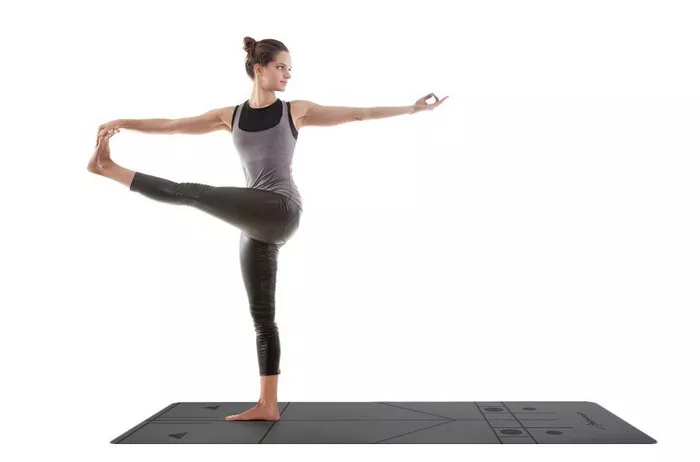Hatha Yoga is one of the most widely practiced forms of yoga in the world. Rooted in ancient traditions, Hatha Yoga emphasizes the balance of body and mind through physical postures, breath control, purification techniques, concentration, and meditation. The term “Hatha” itself is derived from Sanskrit, where “Ha” means sun and “Tha” means moon, symbolizing the union of opposites to achieve harmony.
In traditional Hatha Yoga, there are five fundamental elements that form the core of the practice. These elements, when practiced diligently, help yoga practitioners achieve physical strength, mental clarity, emotional stability, and spiritual growth. In this article, we will explore the five key elements of Hatha Yoga and their significance in a practitioner’s journey.
1. Asana (Physical Postures)
Asanas are the physical postures that form the foundation of Hatha Yoga. The word “asana” means “seat” or “pose” in Sanskrit, and it represents the different body positions used to cultivate strength, flexibility, and endurance.
Importance of Asanas:
Physical Health: Regular practice of asanas improves flexibility, strengthens muscles, enhances balance, and promotes overall well-being.
Mental Focus: Holding postures for a prolonged period trains the mind to stay present and focused.
Energy Flow: Asanas help remove blockages in the body’s energy channels (nadis), allowing prana (life force) to flow freely.
Preparation for Meditation: Certain postures, such as Padmasana (Lotus Pose) and Sukhasana (Easy Pose), prepare the body for prolonged meditation sessions.
Common Hatha Yoga asanas include Tadasana (Mountain Pose), Bhujangasana (Cobra Pose), Trikonasana (Triangle Pose), and Shavasana (Corpse Pose), each offering unique benefits to the practitioner.
2. Pranayama (Breath Control)
Pranayama is the practice of controlling the breath to regulate the flow of prana (vital energy) in the body. “Prana” means life force, and “yama” means control or extension. Proper breathing techniques can help calm the mind, energize the body, and improve lung capacity.
Benefits of Pranayama:
Improved Respiratory Function: Strengthens the lungs and increases oxygen supply to the body.
Mental Clarity and Focus: Regulates brain function, reduces stress, and improves concentration.
Emotional Stability: Helps control emotions by balancing the nervous system.
Detoxification: Enhances the elimination of toxins from the body through deep, controlled breathing.
Common pranayama techniques include:
Nadi Shodhana (Alternate Nostril Breathing): Balances energy and purifies the nervous system.
Bhastrika (Bellows Breath): Increases energy and warms up the body.
Kapalabhati (Skull Shining Breath): Detoxifies and invigorates the body.
Ujjayi (Victorious Breath): Calms the mind and improves endurance.
3. Shatkarma (Purification Techniques)
Shatkarma, also known as Shatkriya, refers to six purification techniques designed to cleanse the body and mind. These practices help remove toxins and prepare the body for higher yogic practices.
The Six Shatkarmas:
Neti (Nasal Cleansing): Uses saline water (Jala Neti) or a cotton thread (Sutra Neti) to clear nasal passages.
Dhauti (Cleansing the Digestive Tract): Includes different techniques such as Vamana Dhauti (vomiting warm saline water) to purify the stomach.
Basti (Colon Cleansing): A yogic enema technique to cleanse the intestines.
Nauli (Abdominal Massage): Involves rotating the abdominal muscles to stimulate digestion.
Trataka (Concentration on a Fixed Point): Gazing at a candle flame or object to enhance focus and strengthen eyesight.
Kapalabhati (Skull Shining Breath): A rapid breathing technique that cleanses the lungs and improves mental clarity.
Practicing Shatkarma helps maintain physical health, balance bodily functions, and enhance mental discipline.
4. Dharana (Concentration)
Dharana refers to the practice of concentration, where the mind is fixed on a single object, thought, or sound. This is the sixth limb of yoga in Patanjali’s Ashtanga system and is an essential aspect of Hatha Yoga.
Importance of Dharana:
Enhances Mental Clarity: Improves focus and decision-making skills.
Reduces Mental Distractions: Helps prevent overthinking and anxiety.
Prepares for Meditation: Serves as a foundation for Dhyana (meditative absorption).
Promotes Emotional Stability: A concentrated mind is less affected by external disturbances.
Practitioners often focus on a mantra, breath, or visualization techniques to cultivate Dharana. Techniques such as candle gazing (Trataka), breath awareness, and mantra repetition (Japa) help develop deeper concentration.
5. Dhyana (Meditation)
Dhyana, or meditation, is the practice of sustained awareness and mindfulness. It is the culmination of all previous elements, leading to a state of deep inner peace and self-realization.
Benefits of Dhyana:
Reduces Stress and Anxiety: Calms the nervous system and lowers stress hormones.
Enhances Self-Awareness: Increases mindfulness and emotional intelligence.
Promotes Spiritual Growth: Helps practitioners connect with their higher self.
Improves Health: Supports immune function, lowers blood pressure, and enhances overall well-being.
Different meditation techniques include:
Mindfulness Meditation: Observing thoughts without judgment.
Loving-Kindness Meditation: Cultivating compassion and positive emotions.
Mantra Meditation: Repeating a sacred sound or phrase.
Chakra Meditation: Focusing on energy centers in the body.
Conclusion
Hatha Yoga is a holistic system designed to create harmony between the body, mind, and spirit. The five elements—Asana (physical postures), Pranayama (breath control), Shatkarma (purification techniques), Dharana (concentration), and Dhyana (meditation)—work together to help practitioners achieve optimal health, mental clarity, and spiritual growth.
By incorporating these elements into daily practice, individuals can experience increased energy levels, emotional balance, and a deeper sense of inner peace. Whether you are a beginner or an advanced practitioner, embracing the wisdom of Hatha Yoga can lead to profound personal transformation and well-being.
Related Topics:














